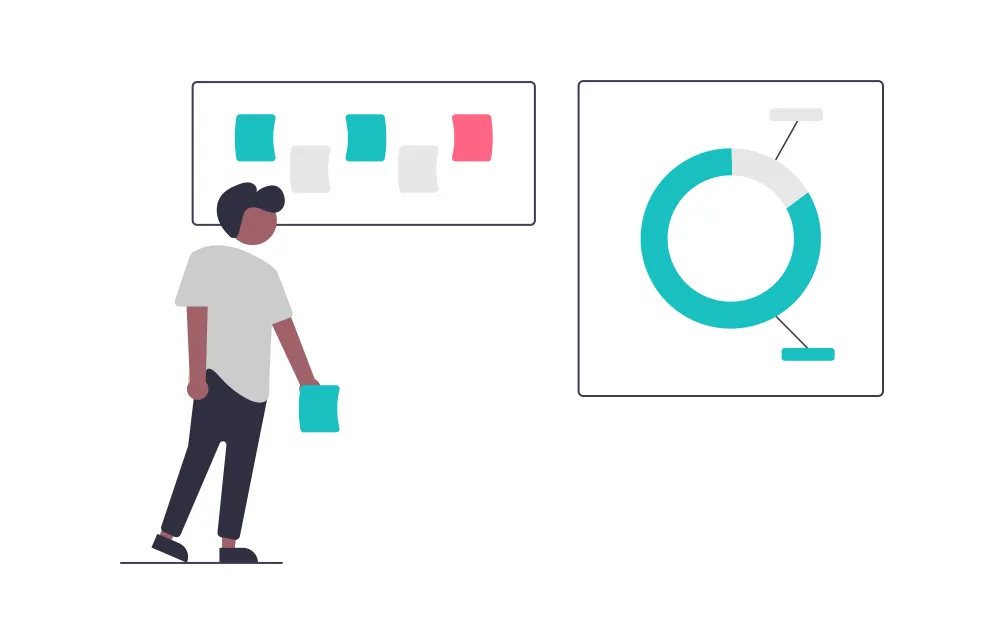Unlocking Success: A Comprehensive Guide to Native Advertising Costs, Strategies, and How Much Does Native Advertising Cost
Introduction
In the dynamic realm of digital marketing, native advertising has become a potent instrument for brands seeking seamless connections with their audiences. This exploration delves into the definition, significance, and factors influencing the costs of native advertising. As we navigate through its intricacies, we'll uncover the diverse benefits and industry benchmarks, shedding light on budget considerations that mold this dynamic facet of digital marketing. Wondering how much does native advertising cost? Read on to unravel the financial aspects shaping this powerful marketing strategy.

Brief Definition of Native Advertising
Native advertising is a type of paid media that seamlessly integrates with the natural form and function of the user experience in which it appears. Unlike conventional display ads, native ads are meticulously crafted to blend seamlessly with the surrounding content, ensuring a more organic and less disruptive experience for the audience. Wondering how much does native advertising cost? The answer lies in understanding the intricacies of this advertising approach that prioritizes harmony and user engagement.
Importance of Native Advertising in the Digital Marketing Landscape
In an era saturated with information and ad overload, native advertising stands out as a strategic approach. It's not just about getting the attention of the audience; it's about engaging them in a way that feels authentic. As consumers become increasingly adept at ignoring traditional advertising, the need for more subtle and integrated methods like native advertising becomes paramount.
Why Native Advertising?
Overview of the Benefits of Native Advertising
Increased Engagement and Brand Awareness
One of the primary advantages of native advertising lies in its ability to capture audience attention and foster engagement. Studies have shown that native ads generate higher click-through rates and increased brand recall compared to traditional display ads. The seamless integration into the user experience makes it more likely for users to interact with the content.
Factors Influencing Native Advertising Costs
a. Platform Selection
The choice of platform significantly impacts native advertising costs. Different platforms offer varying audience demographics, engagement levels, and pricing structures.
Facebook, with its vast user base, offers extensive reach. However, this popularity also means higher competition and, consequently, higher costs. The average cost per click (CPC) on Facebook varies across industries, with competitive sectors like finance and technology commanding higher CPC rates.
Instagram's visual-centric nature makes it an ideal platform for native advertising, particularly for brands with visually appealing content. Costs on Instagram can be influenced by factors like audience targeting and ad placements, with sponsored stories often having higher engagement rates.
- X(twitter)
X(twitter)'s real-time nature allows for timely and relevant native advertising. Costs on X(twitter) are influenced by factors like ad targeting and campaign objectives, with promoted trends being one of the more expensive options.

b. Ad Format
The choice of ad format plays a crucial role in determining native advertising costs. Different formats, such as sponsored content, in-feed ads, and promoted listings, come with distinct pricing structures.
- Sponsored Content
Sponsored content, integrated seamlessly into the user's natural content stream, often commands higher costs due to its non-disruptive nature. This format relies on creating compelling narratives that align with the platform's overall content.
- In-Feed Ads
In-feed ads, appearing within the user's feed, strike a balance between visibility and integration. Their costs can vary based on the platform, user targeting, and ad quality.
- Promoted Listings
Promoted listings, commonly seen in e-commerce platforms, may have costs associated with product placement and visibility. The effectiveness of these ads can be influenced by factors like product relevance and consumer interest.
c. Target Audience
Refining the target audience is pivotal in optimizing native advertising costs. Platforms offer robust targeting options, allowing advertisers to tailor their campaigns to specific demographics or interests.
- Demographics
Targeting specific demographics, such as age, gender, or location, can influence costs. Understanding the platform's user demographics and aligning them with the brand's target audience is crucial for cost-effective campaigns.
- Interests
Targeting users based on their interests and online behavior can enhance campaign effectiveness. However, drilling down too narrowly may increase costs, requiring a balance between specificity and reach.
d. Ad Quality and Creativity
Compelling and relevant content is the linchpin of successful native advertising. Quality and creativity not only impact audience engagement but also influence the costs associated with ad placements.
- Importance of Relevant Content
Content that resonates with the audience and aligns with the platform's overall theme enhances the user experience. Native advertising is not just about selling a product; it's about telling a story that captivates the audience.
- Creative Elements and Pricing
High-quality visuals, catchy headlines, and a clear call-to-action contribute to ad effectiveness. Platforms may reward well-crafted ads with lower costs per engagement, reinforcing the symbiotic relationship between creativity and cost efficiency.
e. Bidding Strategies
Understanding and strategically employing bidding models is essential for controlling native advertising costs.
- CPC (Cost Per Click)
Bidding on a CPC basis means advertisers pay for each click on their ad. This model is advantageous for campaigns focused on driving traffic to a website.
- CPM (Cost Per Mille)
CPM involves paying for every thousand impressions. This model is beneficial for campaigns focused on brand visibility and awareness.
- Tips on Effective Bidding
Optimizing bidding strategies involves a nuanced understanding of campaign goals, target audience, and platform dynamics. Experimenting with bid amounts, monitoring performance metrics, and adjusting bids based on campaign objectives can help advertisers strike a balance between costs and results.
Industry Benchmarks
General Benchmarks for Native Advertising Costs
Native advertising costs vary across industries, with some sectors inherently more competitive than others.
- Tech and Finance
Industries like technology and finance often have higher native advertising costs due to intense competition and the perceived value of reaching affluent and tech-savvy audiences.
- Lifestyle and Travel
On the other hand, lifestyle and travel industries may experience lower costs, as these sectors often have broader target demographics and less competition for ad space.
Specific Trends and Outliers
Analyzing industry-specific trends reveals nuances that can guide advertisers in strategic decision-making.
- E-commerce Boom
The e-commerce sector has witnessed a surge in native advertising, driven by the increasing popularity of online shopping. Advertisers in this space may experience both higher costs and substantial returns on investment.

Case Studies
Showcasing Successful Native Advertising Campaigns
Examining successful native advertising campaigns provides valuable insights into effective strategies and outcomes.
- Airbnb's Experiences Campaign
Airbnb's "Experiences" campaign leveraged Instagram's visual appeal and storytelling capabilities to showcase unique travel experiences. By integrating seamlessly into users' feeds, the campaign achieved high engagement rates and contributed to increased brand awareness.
- Tasty's Sponsored Content on Facebook
Tasty, BuzzFeed's popular food network, utilized sponsored content on Facebook to showcase quick and easy recipes. The visually appealing videos, aligned with Tasty's brand identity, garnered significant user interaction, showcasing the effectiveness of sponsored content.
Lessons Learned
These case studies emphasize the importance of understanding the platform, crafting compelling content, and aligning the campaign with the brand's identity and audience preferences. Successful campaigns go beyond the click-through rate, focusing on building lasting connections with the audience.
Budget Considerations
Tips for Setting Realistic Native Advertising Budgets
Establishing realistic budgets is crucial for achieving a balance between costs and returns.
- Define Clear Objectives
Clearly defining campaign objectives allows advertisers to allocate resources effectively. Whether the goal is brand awareness, website traffic, or conversions, budget allocation should align with overarching goals.
- Monitor and Adjust
Regularly monitoring campaign performance and adjusting budgets based on real-time data is essential. Advertisers should be agile, adapting to changing trends and audience behaviors.
Strategies to Optimize Spending for Maximum ROI
Optimizing spending involves a holistic approach, considering various factors from targeting to creative elements.
- Continuous Testing
A/B testing different ad creatives, copy variations, and targeting parameters allows advertisers to identify the most effective combinations. This iterative process contributes to cost optimization.
- Performance Metrics
Focusing on key performance indicators (KPIs) such as click-through rates, conversion rates, and return on ad spend enables advertisers to gauge campaign success and make data-driven decisions.

Conclusion
In conclusion, native advertising provides a nuanced and effective approach to digital marketing. Its seamless integration into the user experience, along with the potential for high engagement, renders it a valuable tool for brands aiming for meaningful connections with their audiences. Understanding the factors that influence native advertising costs, ranging from platform selection to bidding strategies, empowers advertisers to strategically navigate this dynamic landscape.
As the digital marketing landscape continues to evolve, embracing the principles of native advertising and adjusting strategies based on industry benchmarks and case study insights will be crucial. The key question arises: how much does native advertising cost? Successful native advertising transcends mere numbers; it involves crafting compelling narratives that resonate with the audience, irrespective of the platform or format. As brands embark on their native advertising journey, a meticulous assessment of unique needs and goals will ensure resources are invested wisely, driving not only visibility but also fostering lasting relationships with consumers in the digital realm.













